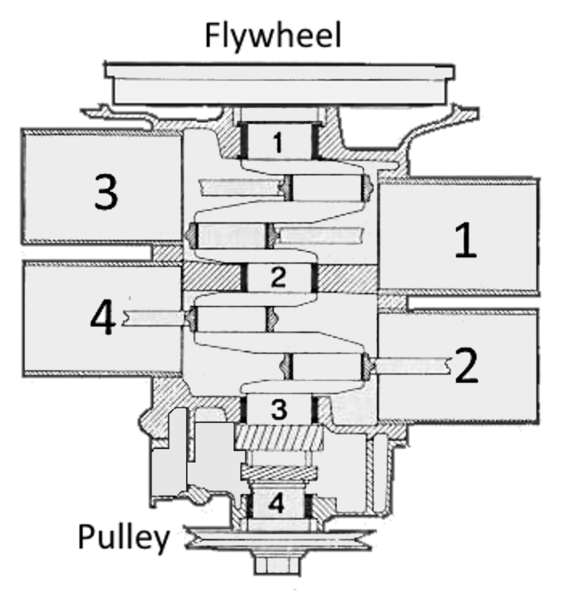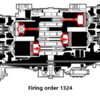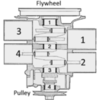As advocated by several people, I replaced the rubber bits on the Berg-5 front mount with aluminum pieces. I didn't like the noise and vibration and decided to try rubber again.
It is possible to replace the aluminum with rubber without removing the engine or transmission as follows:
Place a floor jack under the engine.
Remove the front/mid mount.
Remove the mount studs in the transmission using double nuts.
Remove the bolts attaching the transmission rear mounts to the cradle.
Loosen the clamps on the heater hoses going forward from the heater boxes.
Move the engine and transmission back about 3/8". I lifted up a bit with the floor jack to slightly raise the rear transmission mounts off the cradle. I tried pulling back on the exhaust but couldn't move it much that way. Finally, I used a short wood 2x2 to pry against the front of the transmission.
Screw the rubber pieces into the front mount and raise it into position. Slip the lower transmission studs through the mount to hold the mount in position. Put the nuts on the forward end of the rubber pieces.
Install the rubber pieces at the mid position.
Screw the lower transmission studs in. If using lock nuts, they will have enough resistance to screw the studs in. I did the lower nuts and studs first. They pulled the engine and transmission back into position. The upper nuts and studs are difficult. I wound up using a 1/4" drive socket with a universal joint.
Remove the floor jack.
Replace the rear mount bolts. The outer ones are difficult to insert if you have a Kafer.
Tighten the heater box hose clamps.
That's it






